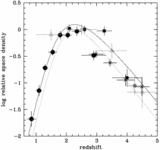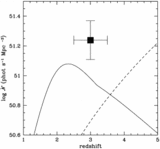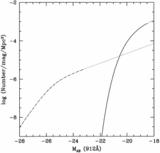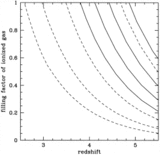Image Details
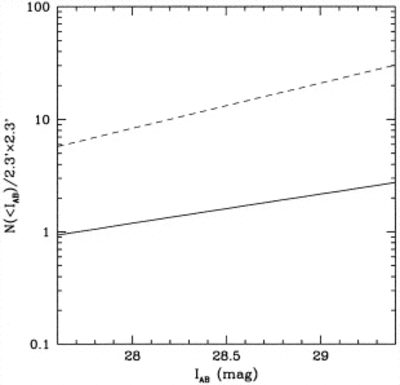
Caption: Fig. 3.
Cumulative number‐magnitude relation of quasars in the redshift range ﹩4.0< z< 5.5﹩. The solid line shows the prediction for our standard model, one in which the faint end of the QSO luminosity function has slope ﹩\beta _{1}=1.64﹩ and tracks the turnover observed in the space density of bright quasars at ﹩z\gtrsim 3﹩. The dashed line shows the increased number of sources expected in the case of a steeper, ﹩\beta _{1}=2.0﹩, luminosity function and a comoving space density that stays constant above ﹩z=2.5﹩. The latter evolution scenario provides, within the errors, enough UV photons to keep the universe ionized at ﹩z\approx 5﹩, but might be inconsistent with the lack of red, faint stellar objects observed in the HDF. Note that in the assumed cosmology, ﹩I_{AB}=28﹩ corresponds to an absolute magnitude of MAB﹩( 1360\,\mbox{\Å} ) =-18.2﹩ at ﹩z=5﹩, at the very faint end of the AGN luminosity function.
Copyright and Terms & Conditions
© 1999. The American Astronomical Society. All rights reserved. Printed in U.S.A.


